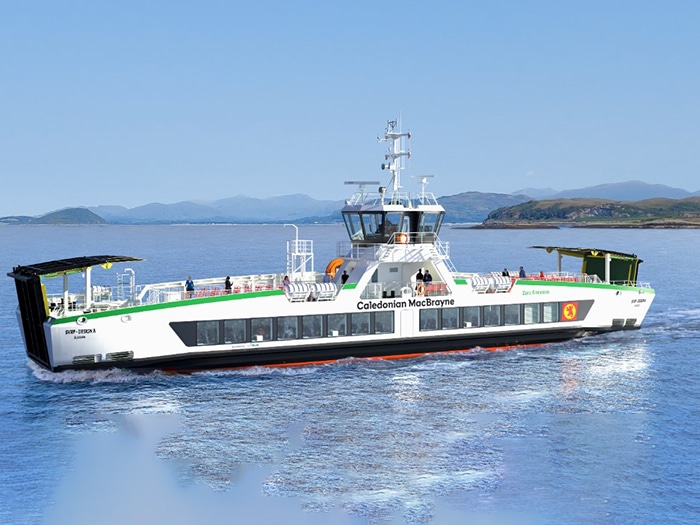World
Scotland moves ahead on procurement of 7 electric ferries for the Clyde and Hebrides

Written by
Nick Blenkey
Concept design for the ferries was developed by naValue.
Caledonian Maritime Assets Limited (CMAL) reports that the first stage of a long-running Small Vessels Replacement Program (SVRP) to procure seven new electric ferries for the Clyde and Hebrides is underway.
CMAL is the Scottish Government owned entity that owns the ferries, ports and harbors and infrastructure necessary to deliver ferry services serving the West coast of Scotland and the Clyde Estuary. It says that the first stage of the competitive tender process will assess if shipyards interested in bidding for the contract meet the financial and technical criteria to take on the project.
Scottish Ministers have made it clear that the troubled Ferguson Marine shipyard will not be part of the plan. The Scottish Government has just announced its latest in a long and expensive series of rescue plans for that yard.
CMAL, which retained German ferry design consultancy naValue to lead the concept design of the new ferries for the Clyde and Hebrides back in 2021, says that costs for Phase 1 of the Small Vessels Replacement Program are around GBP 175 million (about $227 million) for the seven new vessels along with port improvements and shore power upgrades.
The invitation to tender for this contact is expected to issue around September 2024, with a view to awarding the contract in March 2025.
“The Scottish Government is absolutely committed to improving our ferry fleet to better meet the needs of island communities, so I’m very pleased to see the procurement process for seven new small vessels get underway today,” said Scotland’s Cabinet Secretary for Transport, Fiona Hyslop. “Our intention is that these ferries would be deployed on seven existing routes, but would also bring benefits to two other routes from the redeployment of existing vessels. These nine routes currently serve around 30% of the car and passenger carryings on the Clyde and Hebrides network.
“The new vessels will also be electric, helping us to deliver a significant improvement in emissions and local air quality and taking us towards a lower carbon ferry network.”


